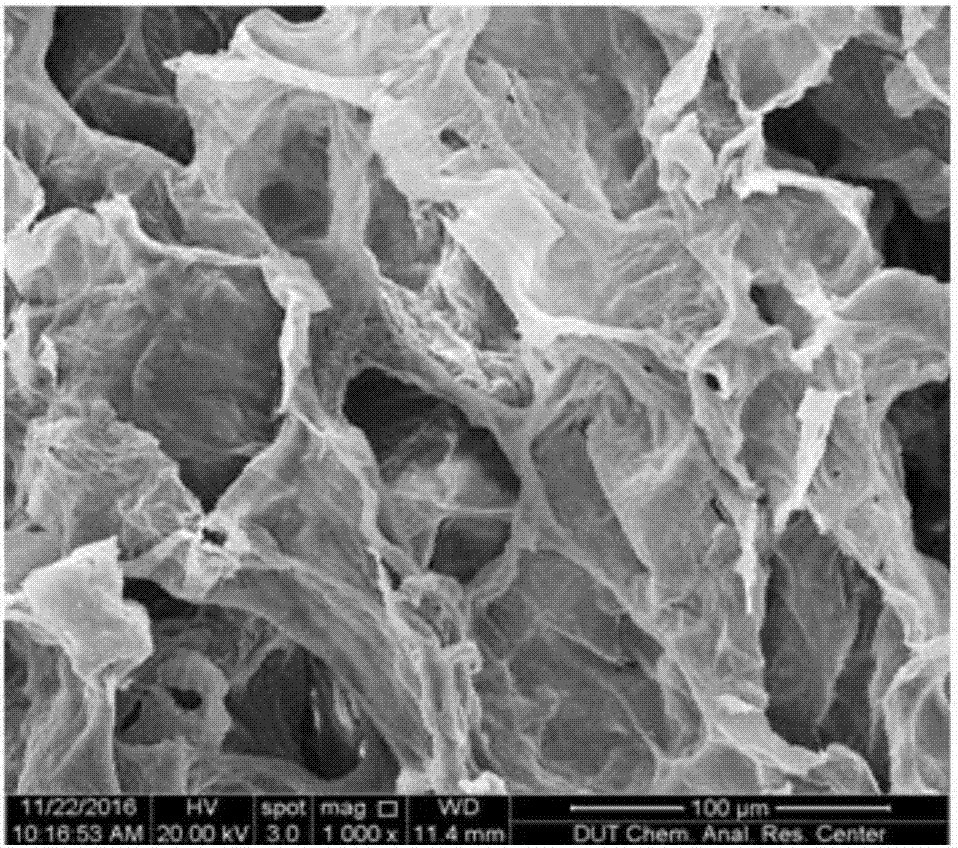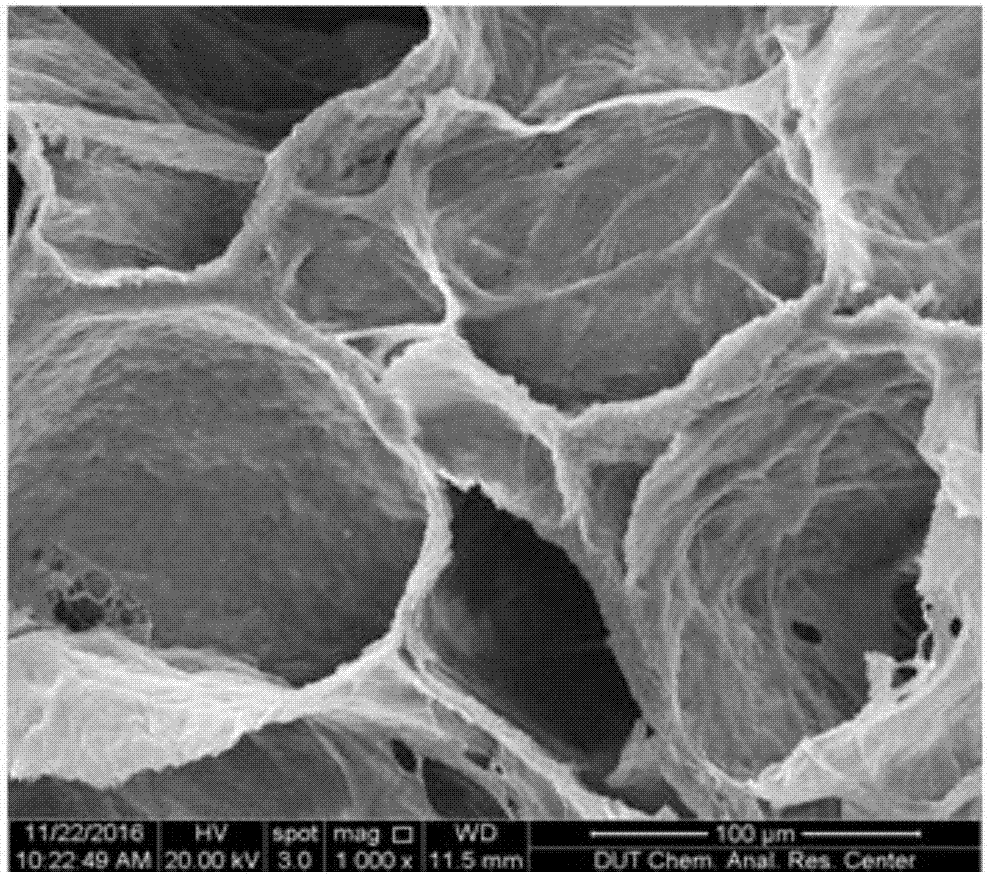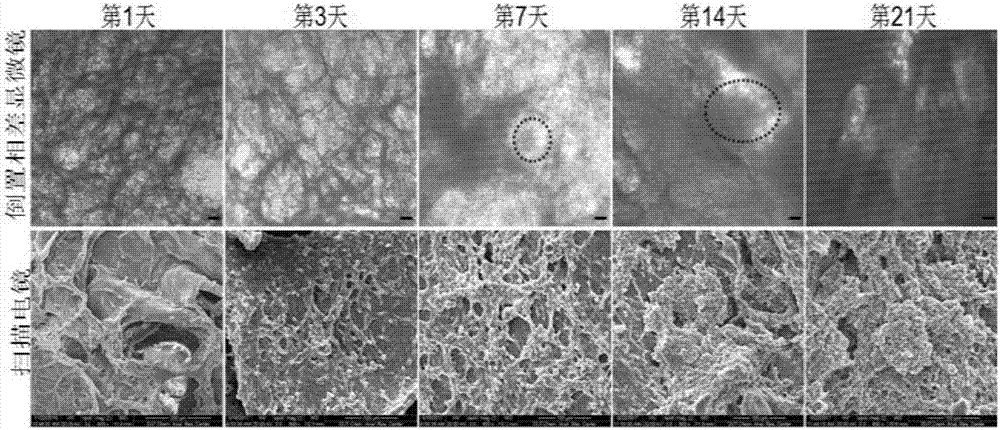Three-dimensional tumor model decellularization porous scaffold, construction method and application thereof
A technology of porous scaffolds and construction methods, applied in the direction of tumor/cancer cells, cell culture support/coating, animal cells, etc., can solve the problems of lack of flexibility in operation, large demand for decellularization reagents, etc., to facilitate cell adhesion , The decellularization process is simple and easy, and the effect of low immunogenicity
- Summary
- Abstract
- Description
- Claims
- Application Information
AI Technical Summary
Problems solved by technology
Method used
Image
Examples
Embodiment 1
[0033] Example 1 Preparation of acellular pig lung three-dimensional tumor model scaffold
[0034] Place the whole pig lung tissue in the refrigerator at -20℃ for 6 hours. After it is fixed and formed, cut and observe the uniform part of the large bronchus with naked eyes. The size of the cut is 8cm. 3 . Put the pork lung cut into a beaker, then add 2000mL of double distilled water, magnetically stir for 30 minutes and then replace with new distilled water. After the above operation is repeated 3 times, wash twice with 2000mL, pH=7.4 PBS, each time with magnetic stirring 30min. After there is no obvious blood color in the tissue, add 2000 mL of 1% (wt%, the same below) SDS solution, and after magnetic stirring for 6 hours, replace with a new 1% SDS solution and continue stirring for 6 hours to remove cells. Then add 2000 mL of 0.5% (v%, the same below) TritonX-100 solution and stir for 10 hours to completely remove the cells. Subsequently, 2000mL PBS was added to wash 3 times, ...
Embodiment 2
[0035] Example 2 Preparation of acellular pig lung three-dimensional tumor model scaffold
[0036] Place the whole pig lung tissue in a refrigerator at -30°C for 3 hours. After it is fixed and formed, cut and observe the uniform parts of the large bronchus with naked eyes. The size of the cut is 6cm. 3 . Cut the pig lung into a beaker, then add 1000 mL of double-distilled water, magnetically stir for 40 minutes, and replace with new distilled water. After the above operations 5 times, wash the same 3 times with 1500 mL, pH=7.4 PBS, each for 30 minutes. After there is no obvious blood color in the tissue, add 1500 mL of 0.5% SDS solution, and after magnetic stirring for 6 hours, replace with a new 0.5% SDS solution and continue stirring for 12 hours to remove cells. Then add 2000mL of 0.3% TritonX-100 solution and stir for 12h to completely remove the cells. Subsequently, 1500mL PBS was added to wash 3 times, each duration of 1h, to completely wash the decellularization reagent. ...
Embodiment example 3
[0037] Implementation case 3 Cross-linking and performance test of acellular pig lung three-dimensional tumor model scaffold
[0038] Place the whole pig lung tissue in the refrigerator at -20℃ for 6 hours. After it is fixed and formed, cut and observe the uniform part of the large bronchus with naked eyes. The size of the cut is 8cm. 3 . Put the pork lung cut into a beaker, then add 2000mL of double distilled water, magnetically stir for 30 minutes and then replace with new distilled water. After the above operation is repeated 3 times, wash twice with 2000mL, pH=7.4 PBS, each time with magnetic stirring 30min. When there is no obvious blood color in the tissue, add 2000 mL of 1% SDS solution, and after magnetic stirring for 6 hours, replace with a new 1% SDS solution and continue stirring for 6 hours to remove cells. Then add 2000mL of 0.5% TritonX-100 solution and stir for 10h to completely remove the cells. Subsequently, 2000mL PBS was added to wash 3 times, each lasting fo...
PUM
| Property | Measurement | Unit |
|---|---|---|
| pore size | aaaaa | aaaaa |
| diameter | aaaaa | aaaaa |
| porosity | aaaaa | aaaaa |
Abstract
Description
Claims
Application Information
 Login to View More
Login to View More - R&D
- Intellectual Property
- Life Sciences
- Materials
- Tech Scout
- Unparalleled Data Quality
- Higher Quality Content
- 60% Fewer Hallucinations
Browse by: Latest US Patents, China's latest patents, Technical Efficacy Thesaurus, Application Domain, Technology Topic, Popular Technical Reports.
© 2025 PatSnap. All rights reserved.Legal|Privacy policy|Modern Slavery Act Transparency Statement|Sitemap|About US| Contact US: help@patsnap.com



